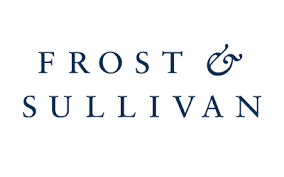The Future of Finance is Powered by Artificial Intelligence
)
How often do consumers applying for a bank loan have to fill-out form after form only to be told they need to go into a branch for further information? The same goes for fraud, where credit cards are temporarily blocked without warning under the threat that certain transactions are potentially of malicious intent. If the transaction is deemed fraudulent, then cancel the bank card or block the transaction. However, branch visits are a symptom of manual back-office process-driven indecision – a dichotomy in today’s otherwise digitised world.
With expectations for seamless digital experiences at an all-time high, consumers are increasingly dissatisfied by the manual & imperfect back-office operations plaguing the financial services value chain.
From Terabytes of transactional data collected daily, to thousands of data estates on consumer behaviour, financial service giants should have the ingredients to understand risk scoring and fraud, so what’s missing?
Whilst most large financial institutions have recognised the need to digitise their customer experiences in order to keep pace with the rapidly evolving FinTech sector, banks have not grasped the need to leverage their data, which leaves little room for AI adoption.
This creates two major challenges throughout the industry:
1. The need of back office data for front office usage
2. To end the user skills barrier
Often times, AI is mostly attributed to automation rather than intelligence pocketed deployments of tools in the back office and a focus on a slicker front end has left a maturity gap between the front and back office.
TO FULLY ADOPT A TECHNOLOGY SUCH AS AI, A BROAD USER BASE IS NEEDED
Here lies the first challenge, the gap serves as a significant obstacle for a technology that pulls insights from data, and ultimately leads to better decision making. In many cases the core of the data sits in a different back office. How can organisations claim to be truly customer centric or make good real world decisions without looking holistically at data?
With this, the second challenge emerges. To fully adopt a technology such as AI, a broad user base is needed – Front and back office, technical and non-technical. This is an area where many AI solutions lag, requiring a working knowledge of statistics that can create a skills barrier that prevents broader adoption. AI has not yet been democratised.
So where should you start?
iHigh impact use cases that are ripe for adoption, the low hanging fruit, serve as a great starting point. Those at the start of this article present two use cases in areas of the business that have:
- A good working knowledge of the principles needed for AI adoption
- A clear path to operationalisation
- Solid metrics to demonstrate ROI to the business
Areas with these requirements serve as a great gateway that will enable a clear path to success and the best chance of overcoming challenges. They will also help create AI champions within the business.
What are the areas ripe for adoption?
1. Credit Risk Scoring
Not the most instantly eye-catching, this use case offers a brilliant first step based on the value generated – imagine having the ability to bank the unbankable.
Risk scoring for hard to understand market segments, i.e. a young migrant family or entrepreneur with minimal credit history, opens up an entire new market segments and begins facing challenges. Namely reduced customer loyalty and non-traditional customers. AI can be used to understand their behaviour and create seamless customer journeys by offering rapid decisions to customers who under traditional models may have a high possibility of default.
2. Fraud
All organisations large or small understand their current losses due to fraud, however they don’t always get it right or understand that there is room for optimisation. Fraud presents a use case with a clear metric in an area of the business already used for modelling – but the area can be supercharged through AI.
3. Trend analytics
AI can be used throughout Capital Markets, specifically, algo-trading teams can use it to supercharge the analysis of real world changes and their effect on markets, which will bring clear value when measured against existing models and the money earnt per million traded. By analysing millions of patterns a minute, teams can leverage AI to rapidly improve or fail fast.
Helping supercharge impact and AI adoption
SparkBeyond provides an AI platform that has the ability to ask millions of questions on data per minute, which is then capable of discovering patterns a domain expert may never think to test or the human eye could never spot.
The platform’s engine is built on one of the world’s largest libraries of code, and combines clever engineering to throw functions at data and:
- Find for hidden insights by extending internal data with hundreds of external data sources
- Allows both business or technical users to find root causes, microsegments & patterns
- Provides a dynamic modelling ability that immediately operationalises ML models and is constantly evolving as the world around it changes
Through thorough driver identification, models become explainable and high performing, which means there’s no more need for a black box. The platform does this through an interface that data scientists and business users alike can use. Hello democratisation.
SparkBeyond helps organisations adopt AI to stay up to date with the market and the world around it. As with all technology solutions, a broad approach with clear metrics, buy-in from senior stakeholders, and a project that fuses people, processes and technology, truly bring the business onboard and cause impactful change.


 Cloud & AI Infrastructure
Cloud & AI Infrastructure
 DevOps Live
DevOps Live
 eCommerce Expo | DMEXCO Asia
eCommerce Expo | DMEXCO Asia

)
)
)
)
)
)
)
)
)
)
)
)
)
)
)
)
)
)
)
)
)
)
)
)
)
)
)
)
)
)
)
)
)
)
)
)
)
)
)
)
)
)
)
)
)
)

)
)
)
)
)
)
)
)
)
)
)
)
)
)
)

)
)
)
)
)
)
)
)
)
)
)
)
)
)
)
)

)
)
)
)
)
)
)
)
)
)
)
)
)
)
)
)
)
)
)
)
)
)
)
.png/fit-in/1280x9999/filters:no_upscale())
)
)
)
)
)
)
)
)
)
)
)

)
)
)
)
